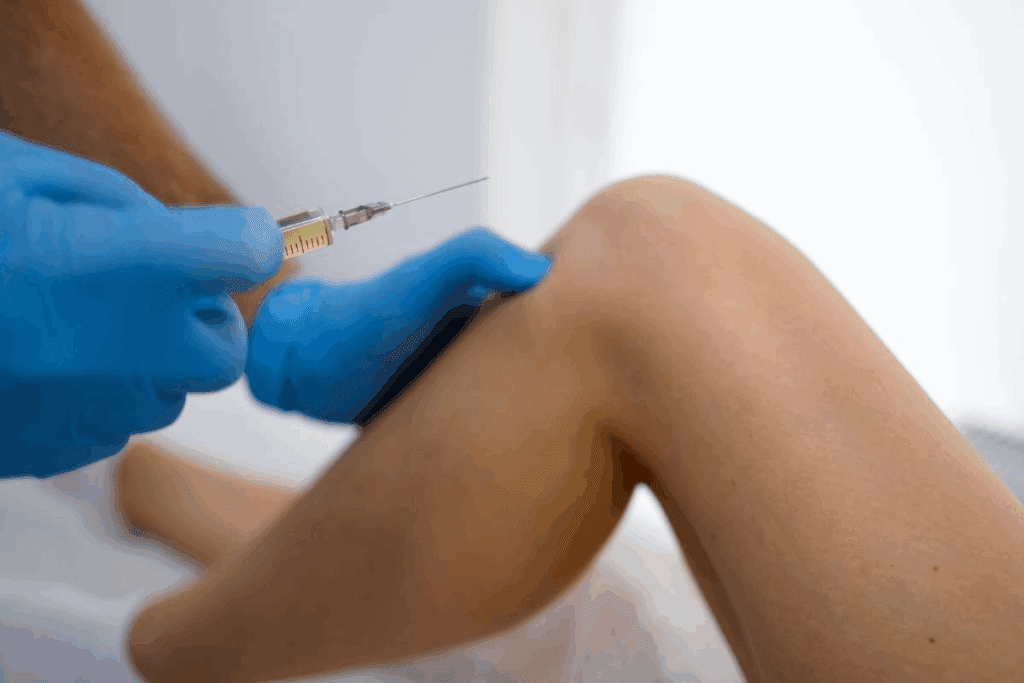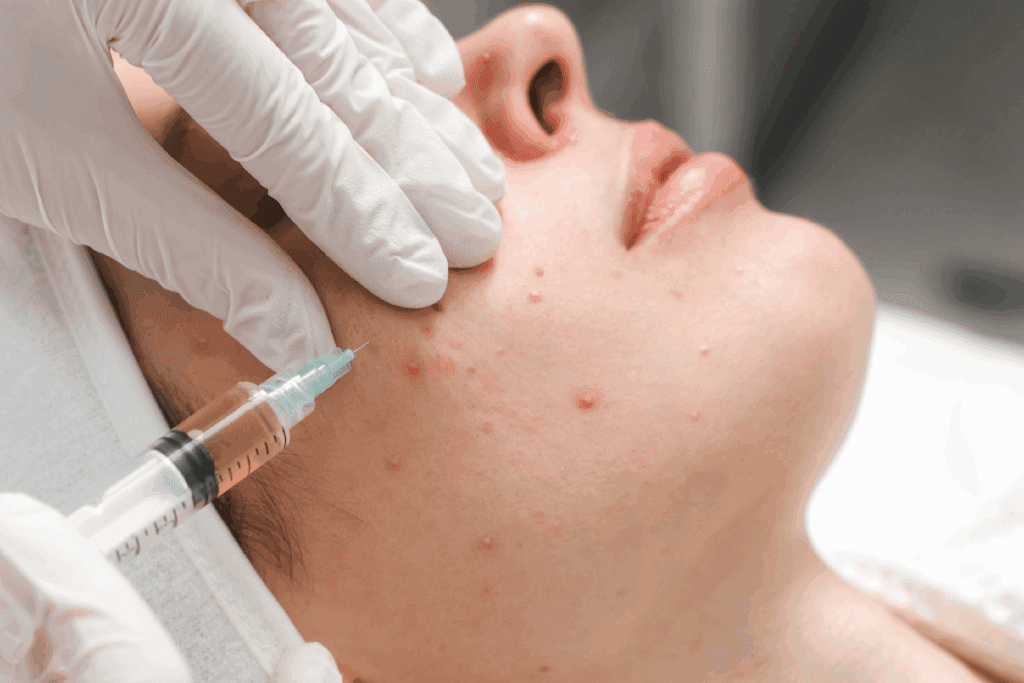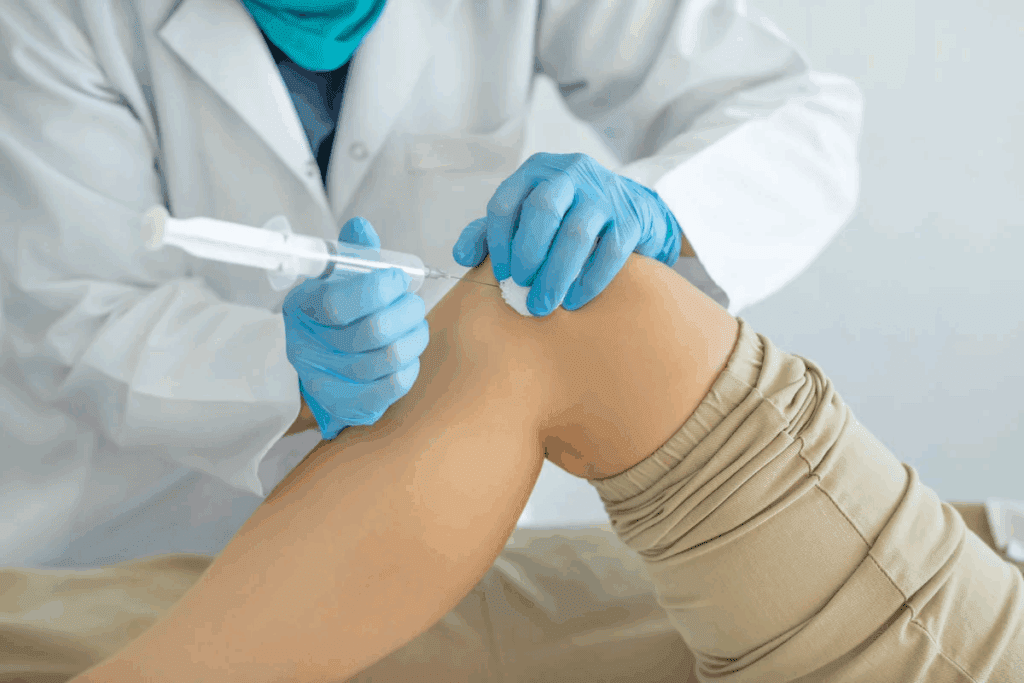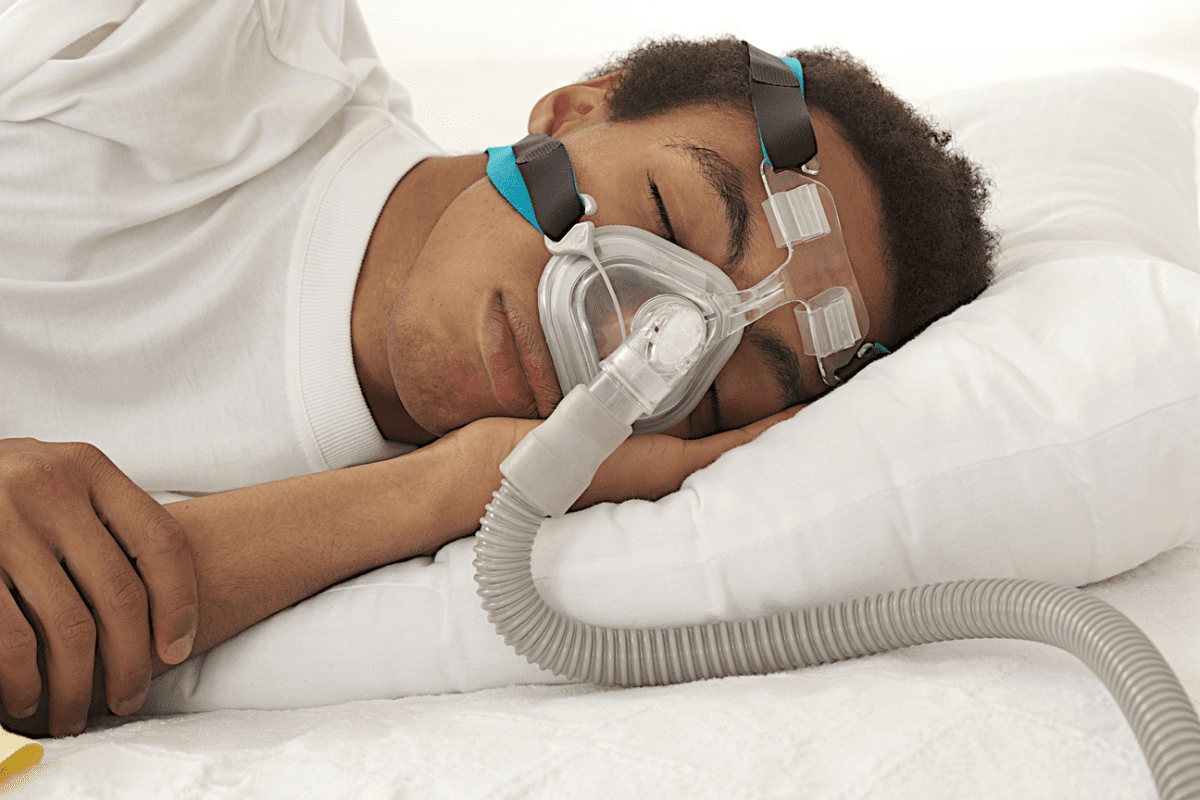Last Updated on November 26, 2025 by Bilal Hasdemir

Cortisone injections are a common treatment for shoulder pain caused by inflammation. While they can be highly effective, some patients find the procedure to be surprisingly uncomfortable. Many people even worry about painful injections before their treatment.
At Liv Hospital, we understand that the discomfort associated with cortisone injections can deter patients from seeking necessary treatment. That’s why we focus on providing patient-centered care to minimize discomfort during the procedure.
Our expert medical team is dedicated to ensuring that our patients receive the most comfortable and effective treatment possible. We strive to make the experience as smooth as possible, from preparation to recovery.
Key Takeaways
- Cortisone injections are effective for treating shoulder pain caused by inflammation.
- The procedure can be uncomfortable, but patient-centered care can minimize discomfort.
- Liv Hospital prioritizes patient comfort during cortisone injections.
- Our medical team is dedicated to providing effective treatment with reduced discomfort.
- Patient-centered care is key to a smooth treatment experience.
Understanding Cortisone Injections and Their Purpose

Cortisone injections are a common way to manage shoulder pain. They help reduce inflammation. This treatment is used for many shoulder conditions to ease pain and swelling.
What Are Cortisone Injections?
Cortisone injections are a type of treatment for inflammation. Corticosteroids are different from anabolic steroids and are more like the body’s cortisol hormone. We use these injections to treat conditions like tendinitis and bursitis by delivering medication directly to the affected area.
The medication in cortisone injections reduces swelling, pain, and inflammation. It’s a targeted treatment that helps without causing systemic side effects like oral steroids do.
Medical Conditions Treated with Shoulder Cortisone Injections
Shoulder cortisone injections treat many conditions that cause pain and swelling. Some common ones include:
- Adhesive capsulitis (frozen shoulder)
- Tendinopathy (tendon damage)
- Bursitis (inflammation of the bursae)
- Impingement syndrome
| Condition | Description | Typical Treatment Outcome |
| Adhesive Capsulitis | Characterized by stiffness and pain in the shoulder joint. | Improved mobility and reduced pain. |
| Tendinopathy | Involves damage to the tendons surrounding the shoulder. | Reduced pain and improved function. |
| Bursitis | Inflammation of the fluid-filled bursae that cushion joints. | Decreased inflammation and pain relief. |
While cortisone injections can offer relief, they don’t cure the underlying condition. We often suggest a treatment plan that includes physical therapy, medication, and lifestyle changes.
The Anatomy of the Shoulder and Why It Matters

Knowing the shoulder’s anatomy is key to understanding why cortisone shots can hurt. The shoulder is a complex joint that lets us move in many ways. This makes it both useful and prone to problems.
Complex Structure of the Shoulder Joint
The shoulder joint, or glenohumeral joint, is a ball-and-socket joint. It has the humerus (upper arm bone), scapula (shoulder blade), and clavicle (collarbone). A network of tendons, ligaments, and muscles supports it, helping with movement and stability.
The shoulder’s parts include:
- The glenohumeral joint itself, where the humerus meets the glenoid cavity of the scapula.
- The rotator cuff, a group of muscles and tendons that surround the shoulder joint, provides stability.
- The labrum, a ring of cartilage that surrounds the glenoid cavity, deepens the socket.
Sensitive Areas and Pain Receptors
The shoulder is full of pain receptors and sensitive tissues. These pain receptors, found in the joint’s lining and surrounding tissues, make the area sensitive. Cortisone injections can activate these receptors, causing pain.
Some of the shoulder’s sensitive spots include:
- The subacromial space, where inflammation can cause pain.
- The rotator cuff tendons can be irritated or inflamed.
- The joint capsule, which contains pain receptors and can become inflamed.
Understanding the shoulder’s anatomy and its sensitive areas helps us see why cortisone injections can be painful. This knowledge also highlights the need for skilled healthcare providers to reduce discomfort during the procedure.
Why Painful Injections Occur More Frequently in the Shoulder
The shoulder joint is unique, which makes cortisone injections more painful. It has a wide range of motion and involves many tissues and nerves. This complexity makes injections more challenging and painful.
Statistical Overview of Patient Experiences
Studies show that 10% to 30% of patients feel a lot of pain during or after cortisone injections in the shoulder. This pain can vary due to different pain levels and the injection technique used.
To understand the pain from shoulder cortisone injections better, let’s look at some data:
| Study | Number of Patients | Percentage Reporting Pain |
| Study A | 100 | 25% |
| Study B | 200 | 15% |
| Study C | 150 | 20% |
Comparing Pain Levels to Other Joint Injections
Shoulder injections tend to be more painful than injections in other joints. For example, knee or hip injections are often less painful.
A study comparing pain levels during cortisone injections in different joints is shown below:
| Joint | Average Pain Score | Number of Patients |
| Shoulder | 6.5 | 120 |
| Knee | 4.2 | 100 |
| Hip | 5.1 | 90 |
These results show that the shoulder is very sensitive to cortisone injections. This is likely because of its complex anatomy and many sensitive tissues.
The Cortisone Injection Procedure Explained
Learning about the cortisone injection procedure can ease worries about it. We’ll explain the steps of giving a cortisone injection. We’ll also talk about the methods used to make it accurate and less painful.
Step-by-Step Process of Administration
The steps to give a cortisone injection are:
- Preparation: The skin is cleaned with an antiseptic solution to lower infection risk.
- Guidance: Ultrasound or other imaging helps guide the needle to the right spot, making it accurate.
- Injection: The cortisone medicine is injected into the area, like a joint or tendon.
- Post-injection care: The area might be bandaged, and patients get advice on what to do next.
Different Approaches and Techniques
There are many ways to give cortisone injections, based on the condition and the patient’s body.
- Ultrasound-guided injections: These are very accurate and safe, as they show the needle’s position in real-time.
- Blind injections: These use landmarks and the doctor’s skill to guide the needle.
We focus on ultrasound-guided injections for their precision and safety. Research shows they lead to better results and fewer problems.
Knowing about the different methods helps patients see the care and skill in giving cortisone injections.
Primary Causes of Pain During Shoulder Cortisone Injections
Shoulder cortisone injections can be painful for several reasons. Knowing these reasons helps us find ways to make the process less painful.
Needle Penetration Through Sensitive Tissues
The needle going through sensitive tissues is a main cause of pain. The shoulder has many nerves and blood vessels. This makes it very sensitive. We use advanced imaging to guide the needle, making it less likely to hit sensitive areas.
Medication Volume and Pressure
The amount and pressure of the medication also play a role. Injecting a lot of medication into a small space can be painful. We choose the right amount for each patient to lessen this pain.
Individual Pain Sensitivity Factors
How much pain someone feels can vary a lot. This is due to genetics, past experiences, and mental state. We adjust our methods to fit each person’s sensitivity, using local anesthetics and other strategies to help with pain.
By understanding and tackling these pain causes, we can make the experience better for patients. Our goal is to offer the best care, ensuring the benefits of cortisone injections without too much discomfort.
Understanding the “Steroid Flare” Phenomenon
After getting a cortisone injection, some people feel a steroid flare. This is when pain and discomfort get worse. We’ll look into why this happens and how to deal with it.
What Causes Post-Injection Flares
A steroid flare happens when cortisone crystals form in the joint. This causes more pain and swelling. It’s usually short-lived, but it can be really tough for those who experience it.
Duration and Intensity of Flare Reactions
The time and how bad steroid flares are can differ a lot. They usually last from a few days to a week. For more tips on handling cortisone flare, check out Healthline’s guide on cortisone flare.
To ease pain after the injection, try using cold packs or over-the-counter pain meds. Always follow your doctor’s advice to reduce discomfort.
Techniques to Minimize Pain Before the Procedure
Cortisone injections can make patients anxious. But there are ways to prepare and lessen pain. By using the right strategies, patients can feel less discomfort during the procedure.
Preparation Strategies for Patients
Getting ready is key to less pain during cortisone injections. Patients can take several steps to prepare:
- Understand the procedure: Knowing what to expect can reduce anxiety.
- Follow pre-procedure instructions: Adhering to guidelines provided by healthcare professionals can help minimize complications.
- Stay hydrated: Drinking plenty of water before the procedure can help.
Medication Options for Pre-Procedure Pain Management
In some cases, medication may be prescribed to help manage pain and anxiety before the procedure. These can include:
- Oral analgesics: To reduce pain.
- Anti-anxiety medications: To help relax the patient.
It’s essential to discuss these options with a healthcare provider to determine the best course of action.
Mental Preparation and Anxiety Reduction
Mental preparation is just as important as physical preparation. Techniques such as deep breathing, visualization, and meditation can help reduce anxiety. Some patients also find it helpful to bring a friend or family member for support.
To illustrate the effectiveness of these techniques, consider the following comparison of anxiety levels before and after implementing pre-procedure strategies:
| Technique | Average Anxiety Level Before | Average Anxiety Level After |
| Deep Breathing Exercises | 7/10 | 3/10 |
| Visualization | 8/10 | 4/10 |
| Meditation | 7.5/10 | 2.5/10 |
By incorporating these techniques into their pre-procedure routine, patients can significantly reduce their anxiety and discomfort.
Pain Management During the Cortisone Injection
We look at ways to lessen pain during cortisone injections. It’s key to make sure patients are comfortable during the process.
Local Anesthetic Options
Using local anesthetics is a good way to cut down on pain. Local anesthetics can be given before or with the cortisone shot. This numbs the area, making the pain much less for the patient.
There are different local anesthetics like lidocaine and bupivacaine. The choice depends on what the patient needs and the doctor’s preference.
Distraction and Breathing Techniques
Distraction and breathing techniques also help with pain. They help patients not think about the pain and can lower anxiety. This makes the experience easier to handle.
Methods like deep breathing, imagining calm scenes, or listening to soothing music can be used. Doctors may also give words of encouragement to help patients relax.
Provider Skill and Its Impact on Pain Levels
The skill of the healthcare provider matters a lot. Providers with a lot of experience know how to make the process less painful. They use techniques like precise needle placement and slow injection.
A skilled provider can also adjust their approach based on the patient’s needs. This makes the procedure more comfortable for the patient.
Post-Injection Care to Reduce Discomfort
After getting a cortisone injection in the shoulder, it’s important to take care of yourself. The time after the shot is as critical as the shot itself for a smooth recovery.
Immediate Aftercare Recommendations
Right after the shot, try to keep your shoulder as quiet as possible for a few hours. Avoid heavy lifting, bending, or any strenuous activities that could hurt your shoulder. Putting an ice pack wrapped in a cloth on the shot site for 15-20 minutes can help with swelling and pain.
Pain Management Strategies for the First 48 Hours
For the first 48 hours, managing pain is key. Use over-the-counter pain relievers like acetaminophen or ibuprofen as your doctor suggests. These can help with pain and swelling. Also, keep your arm a bit loose with gentle moves to avoid stiffness, but don’t push too hard.
| Pain Management Strategy | Description | Benefits |
| Over-the-counter pain relievers | Use acetaminophen or ibuprofen as directed | Reduces pain and inflammation |
| Gentle arm movements | Perform gentle exercises to maintain mobility | Prevents stiffness and promotes healing |
| Rest | Avoid strenuous activities | Allows the shoulder to heal |
When to Contact Your Healthcare Provider
Some pain is normal after a cortisone shot, but watch for signs that need medical help. If pain, swelling, redness, or warmth at the shot site gets worse, or if you have a fever, call your doctor. Also, any signs of an allergic reaction, like trouble breathing or swallowing, are emergencies.
By following these care tips, you can lessen discomfort and help your shoulder heal. If you have any worries or questions, always talk to your healthcare provider for help and advice.
Weighing the Benefits Against the Pain
Many patients wonder if the short-term pain of cortisone injections is worth the long-term pain relief. They must weigh the immediate discomfort against the long-term benefits. This decision is complex and personal.
Short-Term Discomfort vs. Long-Term Relief
Cortisone injections can greatly reduce shoulder pain for several months. The injection itself can hurt, but the long-term relief is often worth it.
Key benefits include less inflammation and better mobility. These improvements can greatly improve a patient’s life, making the initial pain worth it.
Success Rates for Shoulder Pain Reduction
Research shows cortisone injections can effectively reduce shoulder pain. Success rates vary based on the condition being treated. For example, injections for tendonitis or bursitis often work well.
- Reduced pain and inflammation
- Improved range of motion
- Enhanced quality of life
Patient Satisfaction Despite Procedural Pain
Despite the risk of pain during the procedure, many patients are very happy with the results. They see a big drop in pain and an improvement in how they can move.
We focus on patient-centered care. We make sure each person knows the possible benefits and risks. This helps them make the best choice for their treatment.
Liv Hospital’s Approach to Comfortable Cortisone Injections
Liv Hospital focuses on patient care, making cortisone injections as comfortable as possible. Our team works hard to make sure patients have a stress-free experience. We aim to give the best care to our patients.
International-Standard Protocols for Pain Reduction
At Liv Hospital, we follow international standards to lessen pain during injections. We use the latest technology and methods to make the process less uncomfortable.
Our dedication to reducing pain is shown in several ways:
- Local anesthetics to numb the area
- Guided injection techniques for precise placement
- Minimally invasive procedures to reduce tissue damage
Multidisciplinary Care for Shoulder Conditions
Our team includes experts from different fields working together. This ensures patients get a treatment plan that fits their needs.
| Specialty | Role in Care |
| Orthopedic Surgeons | Diagnosis and surgical intervention |
| Physical Therapists | Rehabilitation and pain management |
| Radiologists | Imaging and diagnostic support |
Patient-Centered Solutions for Procedure Anxiety
We know many patients worry about procedures. At Liv Hospital, we offer solutions to help with this anxiety. We provide pre-procedure counseling and relaxation techniques.
Our approach includes:
- Personalized care plans
- Clear communication about the procedure
- Supportive care for anxiety
Liv Hospital combines the best protocols, multidisciplinary care, and patient-centered solutions. This ensures patients get the best care for their cortisone injections.
Conclusion: Making Informed Decisions About Shoulder Pain Management
Cortisone injections can help manage shoulder pain. Understanding their benefits and risks is key. This way, patients can make smart choices about their care.
We’ve talked about the shoulder’s anatomy and why injections might hurt. We’ve also covered ways to lessen the pain. At Liv Hospital, we focus on making patients comfortable. We use top-notch methods to reduce pain during injections.
Our team works together to treat shoulder issues fully. We look at both physical and emotional sides of treatment. This helps patients decide if injections are right for them.
Managing shoulder pain is a team effort. We give patients the info and support they need. This lets them play a big part in their treatment. Whether injections are the best choice depends on each person’s situation. We’re here to help guide them through this.
FAQ
What is a cortisone injection, and how does it help with shoulder pain?
A cortisone injection is a treatment where corticosteroid medication is injected into the shoulder. It helps reduce inflammation and relieve pain. It’s often used for shoulder tendinopathy and adhesive capsulitis.
Why are cortisone injections in the shoulder more painful than in other joints?
The shoulder joint is complex and sensitive, with many pain receptors. This makes injections more painful. The needle also has to go through several layers of tissue, adding to the discomfort.
What can be done to minimize pain before a cortisone injection?
Before the injection, you can try relaxation techniques and medication like local anesthetics. Mental preparation can also help reduce anxiety and discomfort.
What is a “steroid flare,” and how can it be managed?
A “steroid flare” is a temporary increase in pain and inflammation after the injection. It can be managed with ice, over-the-counter pain medication, and usually goes away in a few days.
How can pain be managed during a cortisone injection?
Local anesthetics, distraction techniques, and a skilled healthcare provider can help reduce pain during the injection.
What are the benefits of cortisone injections for shoulder pain?
Cortisone injections can offer significant pain relief and improved mobility for shoulder conditions. Success rates vary but are generally moderate to high.
How does Liv Hospital approach cortisone injections to minimize discomfort?
Liv Hospital follows international-standard protocols for pain reduction. They offer multidisciplinary care and patient-centered solutions to address anxiety. This ensures a comfortable experience for patients.
What should I expect after a cortisone injection, and how can I manage post-injection care?
After the injection, you may feel some discomfort. This can be managed with ice or over-the-counter pain medication. It’s important to follow your healthcare provider’s post-injection care recommendations.
Are cortisone injections effective for long-term pain relief?
While cortisone injections can offer significant pain relief, their effectiveness varies. Some may experience long-term relief, while others may need additional treatments or management strategies.
Reference:
StatPearls. (2023). Corticosteroid adverse effects. National Center for Biotechnology Information Bookshelf. https://www.ncbi.nlm.nih.gov/books/NBK554612/






